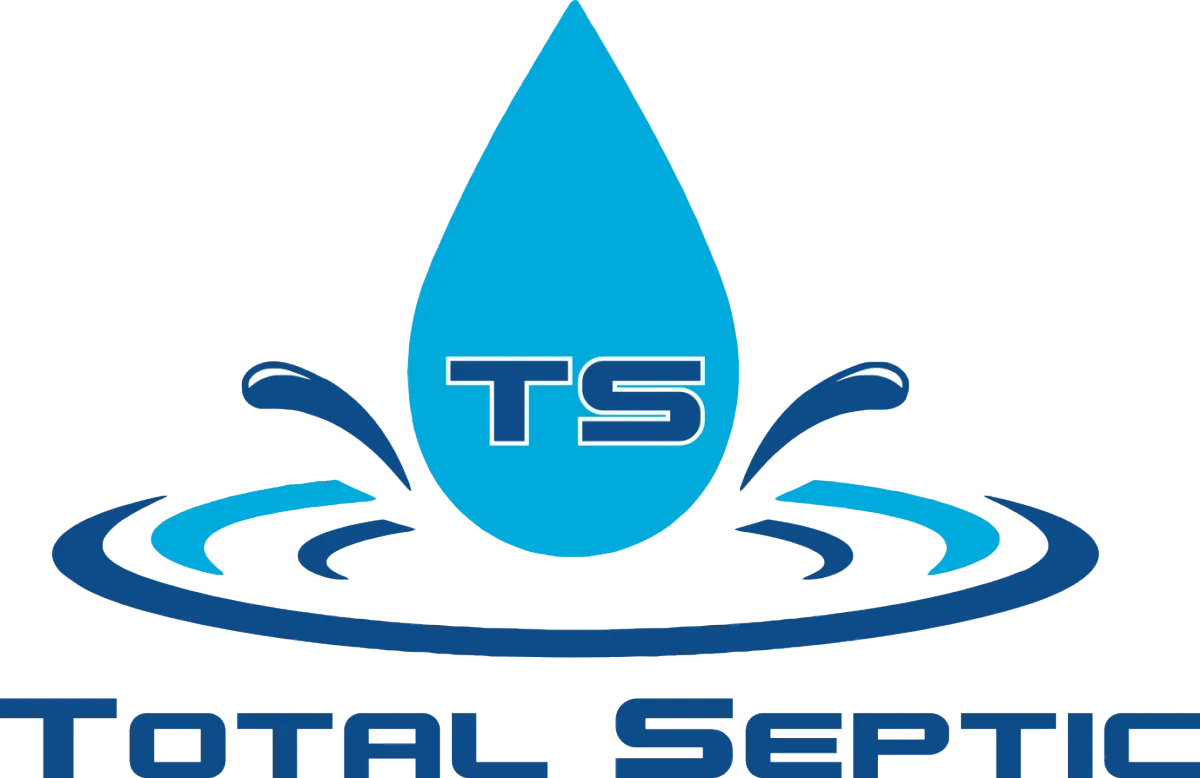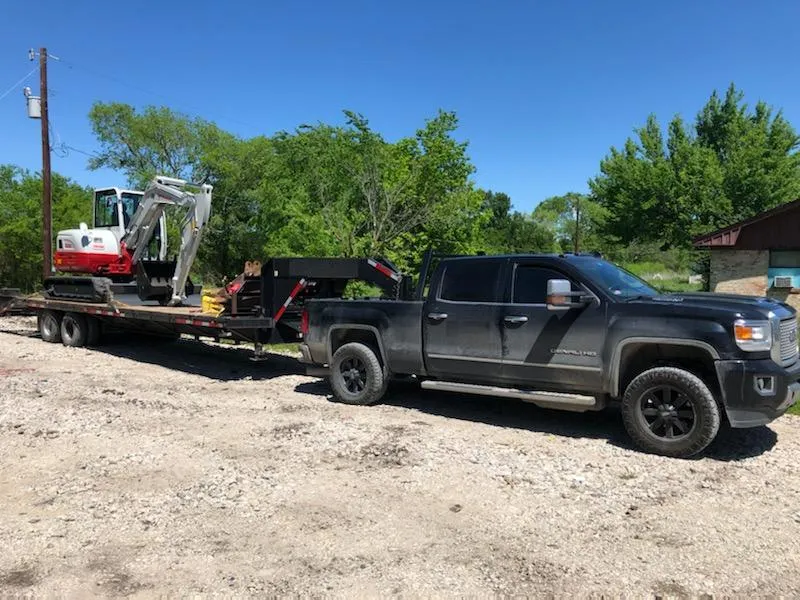
Serving Texas Counties: Collin, Grayson, Dallas, Denton, Rockwall, Fannin and Hunt
Septic Installation near Gunter in Grayson County, TX
Total Septic is Committed to superior quality and results!

AVOID COSTLY MISTAKES:
Do NOT hire an excavating contractor without first reading our free guide:
The ULTIMATE Excavation & Septic "Success Guide."

Septic Installation near Gunter in Grayson County, TX
In Gunter, TX, many homes and acreages rely on onsite wastewater treatment. A well-planned septic installation keeps water moving safely, protects your soil and well, and supports everyday comfort. This guide explains what a system does, the benefits to expect, why local expertise matters, and the hiring process specific to Grayson County.
How Can We Help?


What a Septic Installation near Gunter in Grayson County Does
An on-site system handles every gallon from toilets, showers, sinks, and laundry. Wastewater flows to a buried, watertight tank. Inside the tank, solids settle, oils float, and bacteria begin breaking down waste. The clarified effluent exits to a dispersal area—trenches, chambers, or drip lines—where prepared soil completes treatment by filtering pathogens and nutrients before clean water percolates into the groundwater cycle.
Proper design matches your home and soils. In North Texas, conditions can switch from sandy loam to heavy blackland clay within a few lots. Designers evaluate bedroom count, peak daily flow, slopes, setbacks, and test pits. The recommended system might be a conventional trench, a chamber bed, an aerobic treatment unit with spray or subsurface drip, or low-pressure dosing. Each path balances performance, footprint, energy, and maintenance while meeting Texas and county rules.
A quality installation operates quietly. Cleanouts, risers, and mapped lids make service simple. Good grading keeps roof and surface runoff away from the field so the soil can do its job.
Benefits You Can Expect from a Quality Installation
Health protection is the headline benefit. Effective treatment prevents cross-contamination of wells, irrigation taps, and nearby waterways. Reliability comes next: well-sized systems handle morning rushes and holiday gatherings without slow drains or odors. Your property value improves because buyers and lenders trust permitted designs with clear records. A matched system also preserves landscaping by dispersing effluent evenly, preventing soggy areas. Finally, long-term savings add up: the right design, careful installation, and routine care reduce emergency calls and extend service life.
For rural and edge-of-town parcels, a modern septic installation provides independence from municipal sewer extensions. You can plan additions, shops, or guest spaces around a documented reserve area, keeping future options open. Quiet operation and low visual impact make living with a system easy.
Benefits of Hiring a Local Septic Installation near Gunter in Grayson County
Local teams understand local soils and procedures. Hiring a septic installation near Gunter in Grayson County gives you pros who know permit steps, setbacks from wells and property lines, and the drawings inspectors prefer. They recognize how clay swells after autumn rains, how summer heat influences evapotranspiration, and when dosing or aerobic treatment is the safer choice.
Proximity speeds everything. Nearby crews schedule soil work quickly, coordinate utility locates, and adjust trench depths or pump specs when weather shifts. Sourcing tanks, risers, filters, pumps, and panels from North Texas suppliers reduces delays. If you need service later, the same folks can pull your records and arrive with the right parts. You can also check references from neighbors and builders who have worked with them on similar soils.
See Our Excavation & Septic Services

✔️ Commercial Excavation
✔️ Residential Excavation
✔️ Demolition
✔️ Dozer work
✔️ Septic inspections
✔️ Septic system pumping
✔️ Septic installs traditional systems
✔️ Septic tanks - aerobic systems
✔️ Septic tanks - Plastic/poly
Quality Services Launched FAST!

✔️ Septic tanks - Concrete
✔️ Sewer repairs
✔️ Trenching
✔️ Utilities Trenching
✔️ Pump Outs Installs
✔️ Maintenance Contracts
What Are You Waiting For?
The Process for Hiring a Septic Installation near Gunter in Grayson County, TX
Use these steps to move from first call to turn-key system with confidence:
Discovery call: Share bedroom count, fixtures, peak usage, garbage disposal use, water-saving features, and any plans for a shop, pool, or accessory dwelling. Agree on timelines and budget ranges.
Site visit and soils: The installer walks the lot, flags wells, utilities, easements, creeks, and trees, and performs a soil evaluation or percolation test. Texture, structure, restrictive layers, and seasonal water tables guide system selection.
Options and layout: Compare solutions suited to your lot—conventional trenches, chambers, aerobic treatment with spray or drip, or low-pressure dosing. Consider cost, energy, maintenance, and aesthetics.
Permitting and design: The designer prepares scaled drawings, calculations, pump curves as needed, and an operation and maintenance plan that matches county requirements.
Scheduling and preparation: Order utility locates, clear access, and stage materials. Choose weather windows that protect soil structure and avoid trench wall smearing.
Installation: Excavate, set tanks level, confirm inlet and outlet elevations, install distribution piping, bedding, and geotextiles as specified, then backfill with careful compaction. For powered systems, mount control panels, wire pumps, set timers, and test alarms.
Inspection and commissioning: County inspectors verify setbacks, capacities, and construction details. The crew tests flows, pumps, and alarms, then documents as-built conditions and marks lid locations.
Owner orientation: You receive a maintenance schedule, pump-out intervals, dos and don’ts, and a map of components.
Follow-up: Plan routine inspections—annually for many conventional systems and semi-annually for numerous aerobic units—to keep performance steady.
Smart Planning Tips for Gunter, TX Homeowners
Plan septic early in the build so driveways, patios, trees, and pools do not conflict with the drain field or future reserve. Keep heavy vehicles off absorption zones. Grade the site so roof and yard runoff bypass the field. Add risers for easy lid access, effluent filters to catch fine solids, and high-water alarms with battery backup for resilience. On larger tracts, preserve space for future barns or accessory dwellings so reserve areas remain intact.
Cost Drivers and Ways to Control Them
Total cost reflects soil limits, tank size, system type, depth to rock or groundwater, electrical needs, and access. Advanced treatment and dosing add mechanical parts but unlock challenging lots and protect landscaping. Control costs by providing clear access, removing obstacles, marking utilities and corners, and making timely decisions on equipment options. Over time, the correct design is more economical than a bargain system that struggles in real-world conditions.
Care and Maintenance to Protect Your Investment
Support the system with basic habits. Limit grease, wipes, and harsh chemicals. Spread laundry through the week to avoid hydraulic surges. Pump the tank on the recommended schedule based on household size and use. Divert the roof and yard runoff away from the field. Mark cleanouts and lids before groundcover thickens. Keep records of service, filter cleanings, and any alarm events. These basics keep treatment reliable, protect groundwater, and extend service life.
Ready to Take the Next Step?
Whether you are building new, adding bedrooms, or replacing a failing unit, coordinating a septic installation near Gunter in Grayson County, TX starts with a soil-smart design and a nearby team. With the right plan and care, your system will operate quietly, protect your property, and serve your household for years. Start early, ask questions, and keep records to protect your investment. Well.
Facebook
Google Plus